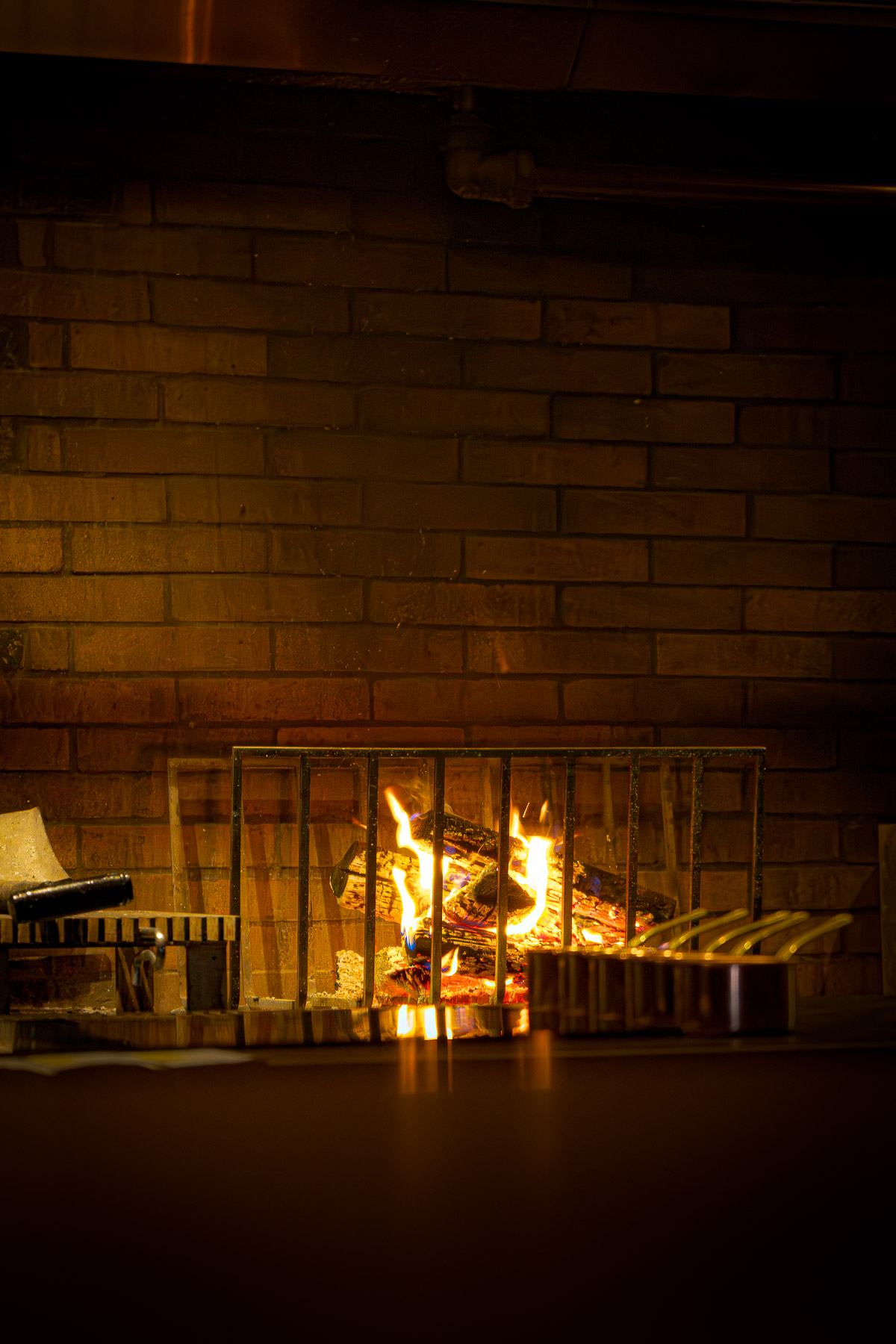The glass door opens. Smoke curls toward a mirrored ceiling, fourteen seats curve around an open flame, and, slack-jawed, I realize: Dani García knew how to export fire to the desert. The question isn’t whether it burns—it’s whether it warms us.
Theatre of Smoke and Mirrors
Astet Studio built a temple to fire: black bricks, brass mesh, mirrors that capture the flame, and a central chandelier that lends a sense of elegance. The semicircular room seats just fourteen. There’s no escape. We’re here to watch fire perform, and the wide table invites immersion. The lighting is right. Black dominates. Gradually, the room fills—couples, almost all with some Spanish element at the table, clearly seeking a taste of “home.”
Dubai does this: it imports the world and expects each to bring along a piece of what they lack.
We’re greeted by the maître d’ and the sommelier. Brief explanations of the menu’s possibilities. No excess. The Italian sous chef commands the kitchen—Jesús Lobato Suárez, the young Sevillian awarded the Michelin Young Chef Award, was absent that evening. But the team moves with near-Japanese precision, though there’s something Latin, perhaps Andalusian, in how they laugh, how they serve, how they face the risk of charcoal. Nothing is left to chance. And yet, there’s no rigidity.
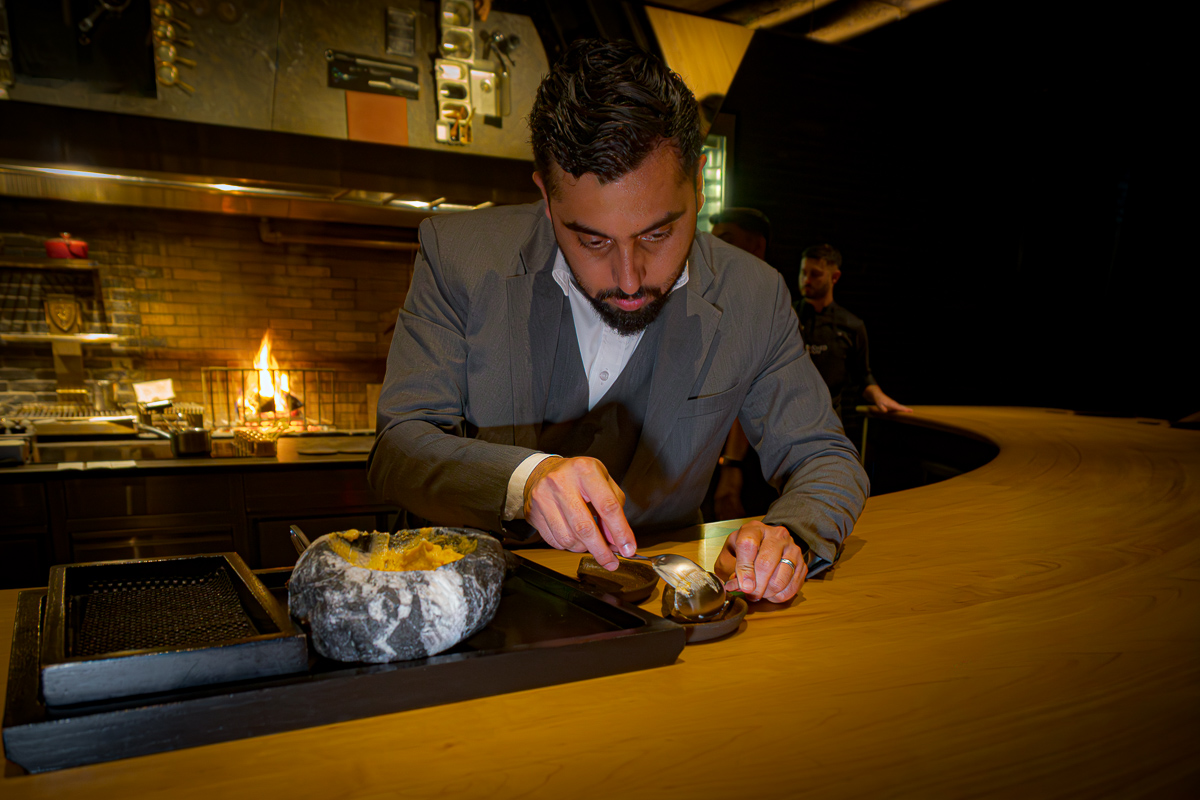
Dani García: The Prodigal Son
To understand Smoked Room, you must understand Dani García. Málaga, 1975. First Michelin star at 25. Second in 2011, becoming the first Andalusian chef with two stars. In 2018, at his eponymous restaurant, he earned three Michelin stars—a unique feat in the region.
And then, he closed the restaurant.
When nothing predicted it, Dani decided to turn his back on orthodox fine dining. He wanted to democratize Spanish cuisine, moving toward more informal, accessible concepts. He even collaborated with McDonald’s—a move that shocked peers but revealed his thesis: technique belongs everywhere, not just in starred dining rooms.
“My dream now is to take a Sunday stroll in Marbella knowing that people around the world are eating my cherry gazpacho,” he said in interviews.
But fine dining, like a good son, never left his blood. In 2020, he opened Smoked Room Madrid inside Leña. Six months later: two Michelin stars. A historic achievement. The “Fire Omakase” was born from this return: a fusion of Japanese omakase philosophy with Dani’s expertise in controlling fire. Dubai became the second stop in January 2024. Six months later: one Michelin star. History repeats itself!

Dubai: Laboratory Under Pressure
Dubai is a laboratory where few are, but everyone wants to be. The market is saturated. Top restaurants aren’t as full as they used to be. There certainly won’t be room for everyone. But one thing is certain: the best and most persevering will survive. Smoked Room arrived at the moment when the city tests who came to stay.
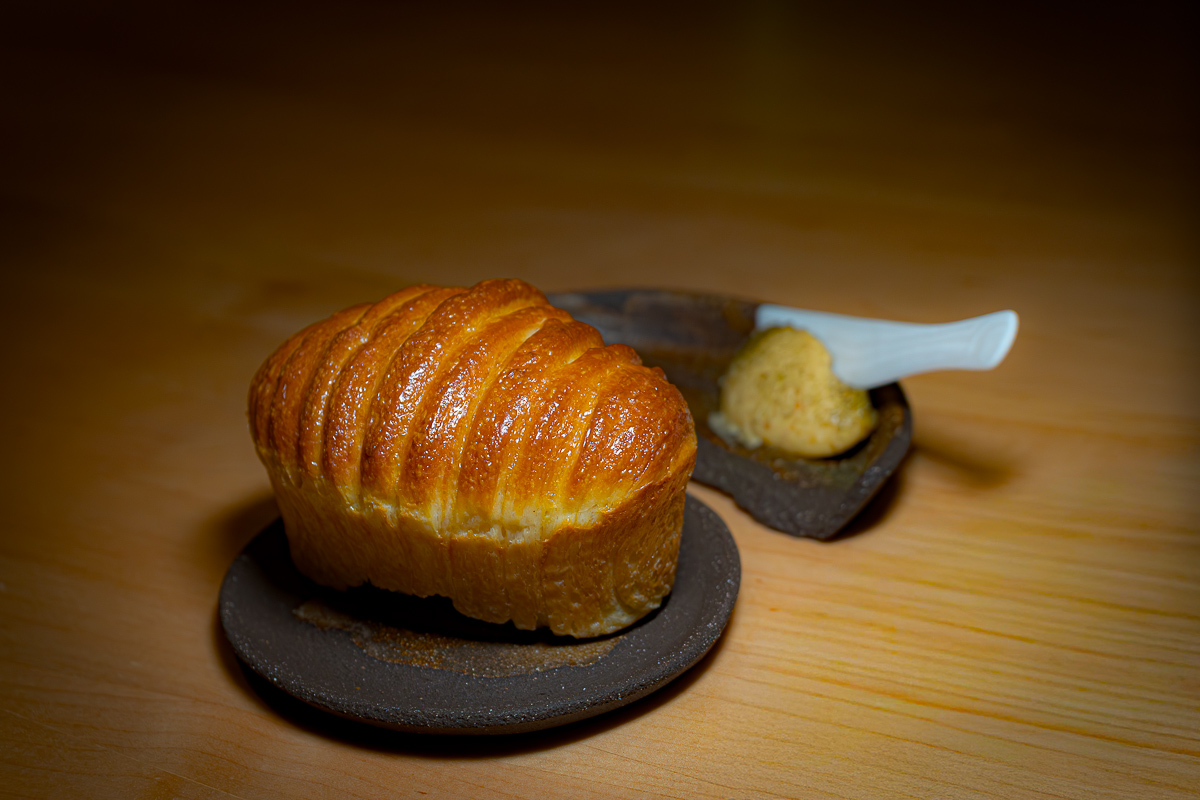
Beginning with a Petition
With good Japanese-inspired cocktails on the table, we begin with brioche. Triple fermentation, Bordier butter with red miso paste, and nori powder. The crust breaks with a gentle crunch. The interior remains a soft cloud. The miso butter, mixed before us, tastes of cultivated sea. I’d be happy even if this were the best moment of the night.
What makes it memorable isn’t just technique or presentation. It’s the disarming humility of beginning this way, with bread and fat, no snacks, no preludes. The aroma evokes memory: grandmother’s cakes fresh from the oven during childhood. There’s pleasure that only good bread and good butter can deliver. Official petition: may all beginnings be like this. More good bread, fewer tartlets.

Hokkaido at the Table
The Hokkaido Amaebi is sweet, translucent shrimp bathed in noisette butter and yuzu kosho. Quality reveals itself in texture, in freshness. The balance is remarkable: notes of toasted nuts from the butter burned to the right point, refreshed by yuzu kosho. In Madrid, they typically use shrimp from Motril; here, the Mediterranean learned to speak Japanese.

Smoked Hamachi arrives with roasted tomato essence and yuzu. Excellent quality and aging, lightly smoked without excess. The smoke balances with yuzu’s freshness and the acidity of tomato water. Shafer Chardonnay Red Shoulder Ranch 2022 accompanies—acidity of a Chablis, flowers, lemon, pineapple, minerality. It works.
Homage to Vanguard
The signature dish arrives: Smoked Sturgeon, Tomato Nitro, horseradish cream, and caviar. The Spanish avant-garde technique that made Dani famous is here, but not as a formula. The flavors are integrated and strangely elevated by horseradish, which doesn’t overpower. The caviar isn’t a garnish; it’s salinity in the form of beads.
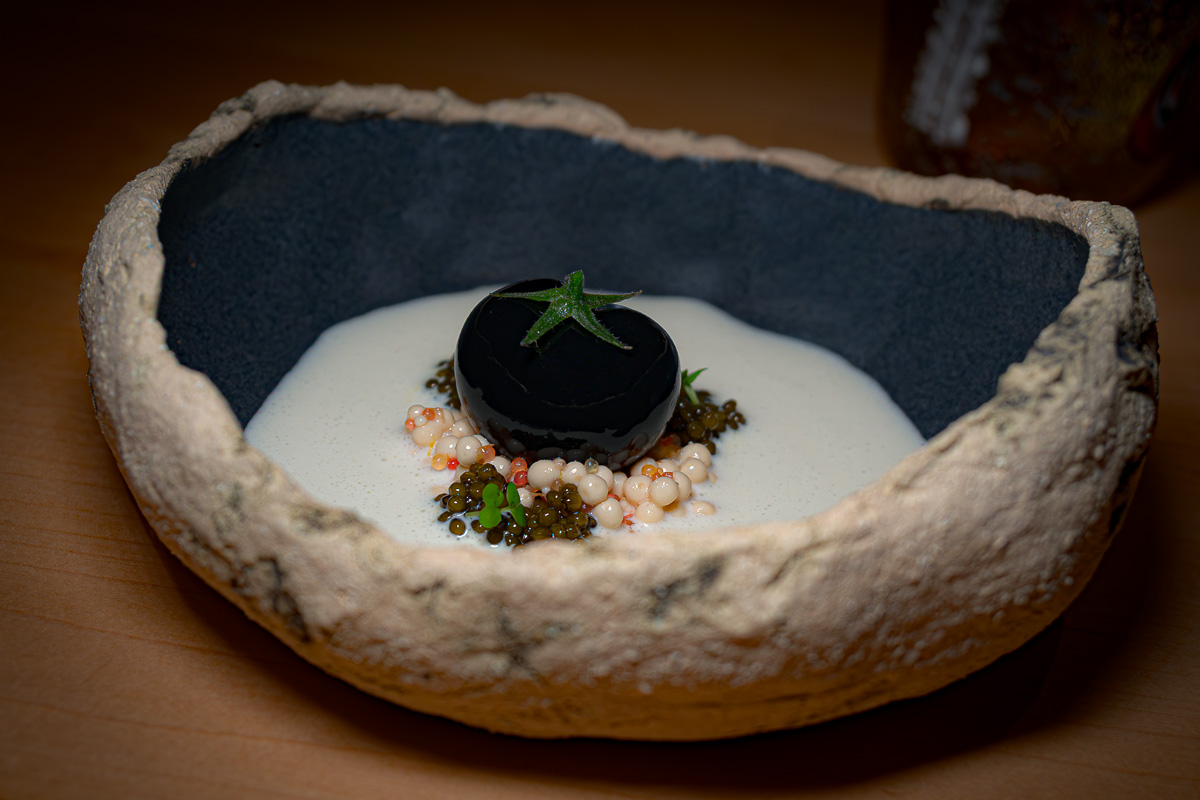
And here comes the best pairing of the night: Anthìlia Donnafugata 2023, Sicilian white, modest, with silky texture, lively acidity, and mineral salinity. Notes that cut through the richness of smoked sturgeon without oppressing it. It’s technical harmony elevated to emotion.
This dish carries nostalgia. Avant-garde cuisine is increasingly on the shelf, replaced by emotional cooking. Dani, here, manages to combine both. And it works.
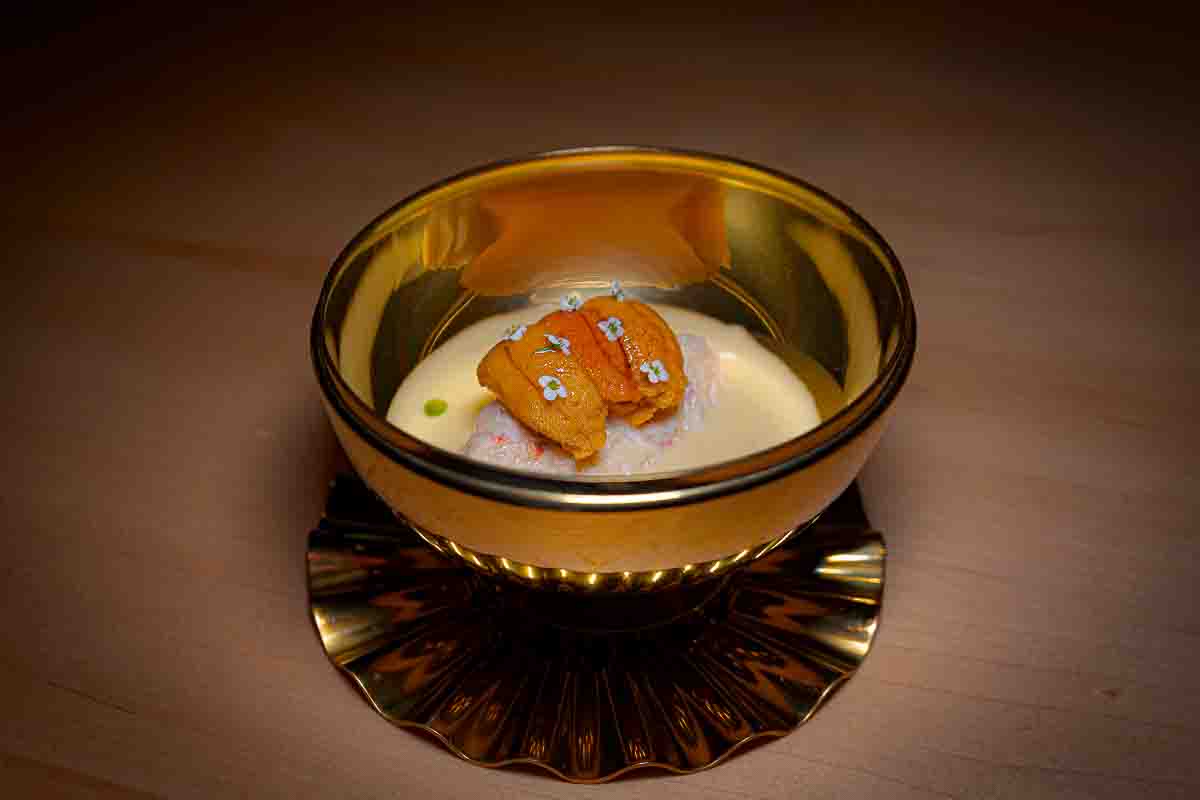
Comfort and Restraint
The Sweet Corn Chawanmushi with Chinese hairy crab and Sea Urchin is sweet, creamy, saline, very well prepared—but needing some extra dimension to rival the sweetness of the elements. Orange Gold 2021, Gérard Bertrand—orange wine with light tannins, flowers, crystallized fruits—brought acidity that helped balance.

The citric Dashi of tomato water in snow form cleanses the palate without leaving a memory.
Grilled Sea Cucumber with gochujang glaze and cured egg yolk is excellent in its play of textures. The gelatinous side of the sea cucumber, grilled with precision, combines with the creaminess of the yolk and contrasts with the crispy skin. The gochujang coating brings notes of spice.

Saumur Domaine Guiberteau Le Bourg Brézé 2021—Chenin Blanc from a unique terroir—Brézé. Saline, tense, with lemon and spice, pairs well with the dish.
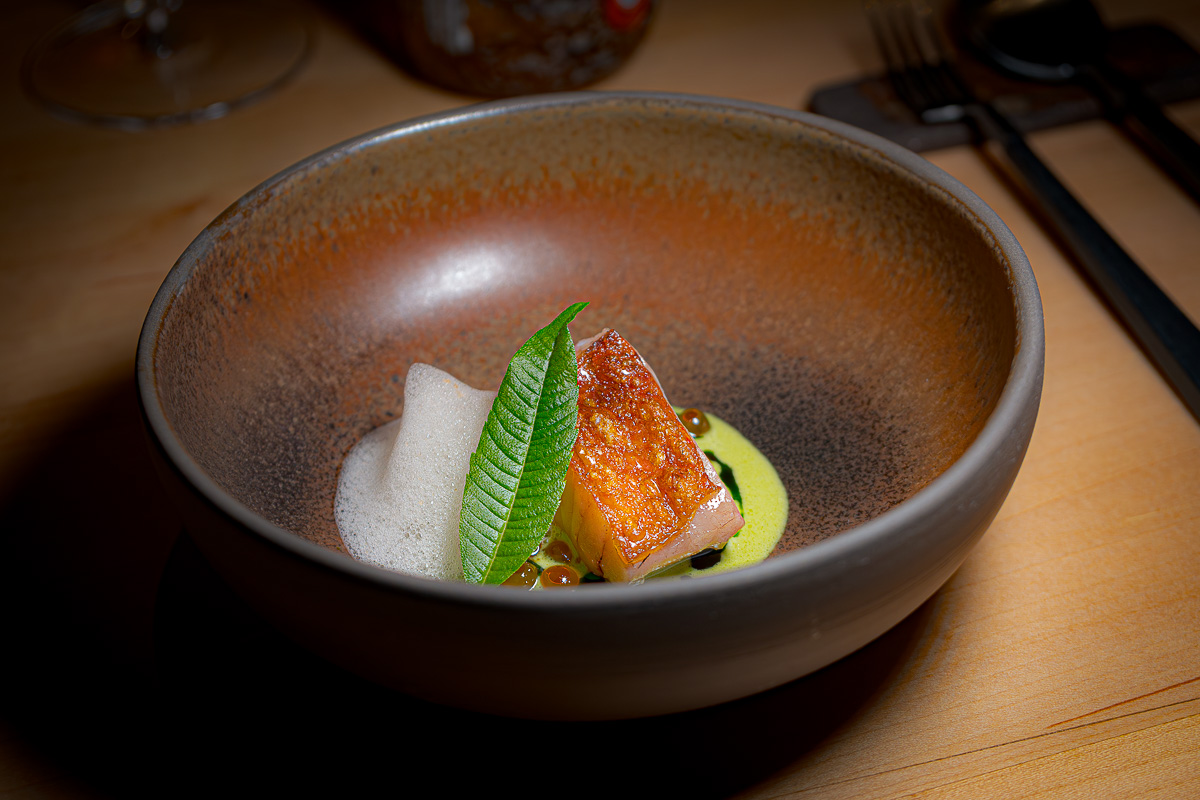
The aged Kinmedai with seaweed emulsion and ikura presents good quality, in both product and cooking. The fish’s aging is perceptible, and its unmistakable flavor is accentuated. Here, the sommelier took a risk: Domaine du Pélican Arbois Poulsard 2020, pale red from Jura—lightly fruity and herbaceous. A theoretically risky choice by the books, but successful: the lightness, acidity, and certain citrus fruit work.

The Partridge Anolini, submerged in consommé infused with fresh herbs, is the menu’s comfort moment. The broth is simultaneously light and deep, well aromatic. The whole ensemble is balanced and brings us the taste of the Italian sous chef’s home. A Telleira Godello, Galician white with peach, apple, saline minerality, creamy yet fresh texture—works perfectly.
This dish brings something often forgotten in fine dining: coziness. It’s not surprising. It’s comforting. And sometimes, that’s harder to achieve.

Fire as Flavor
Barbarie Duck arrives in two acts. First, the dry-aged, slowly smoked breast, then grilled over robata. The aging process, the smoking, and the crispy skin are visible—the smoke penetrates the meat to just the right degree. The sauce travels this time to Mexico—the mole poblano is balanced, yet full of nuance. Corn risotto serves as a creamy base. No climax, but coherent.

Second act: a croquette, or the savory version of a Ningyo-yaki filled with duck legs that we dip in black garlic and yuzu kosho emulsion before tasting. Crispy outside, velvety and indulgent filling. The emulsion is unctuous, with fermented sweetness that rounds and enriches.
Domaine Michel Lafarge, Bourgogne 2019—light, open Pinot Noir of medium intensity and delicate tannins—is relaxed and elegant. This lightness pairs with and cuts through the duck’s fat.
Here, Smoked Room reaches one of its highest points: fire as flavor, not as effect.

Wagyu: Predictable Emotion
Wagyu A5 from Saroma with 34-year-old soy sauce and fresh wasabi is a collection of dream products. The cooking is on point—caramelized exterior, interior melting in the mouth. Fresh wasabi brings a gentle and perfumed heat, cutting through fat. And the soy? It seasons everything it touches. By fault, or personal virtue, I’d trade any wagyu for noble beef from northern Portugal and Galicia. But I understand the adoption. The dish is predictable—and irresistible.
M. Chapoutier Monier de la Sizeranne, Hermitage 2018—powerful Syrah with black fruits, pepper, and refined yet concentrated texture—had the necessary potency.

A transition dish follows: vanilla ice cream, sake infusion, and soy caramel. Balanced sweetness, creaminess. Very good.
Freshness Versus Chocolate
The apple dessert with green shiso and yogurt is my kind of ending. Focused on fruit, light, and short on sweetness, perfect for closing an extensive menu. Freshness, acidity, balance. Perfect.
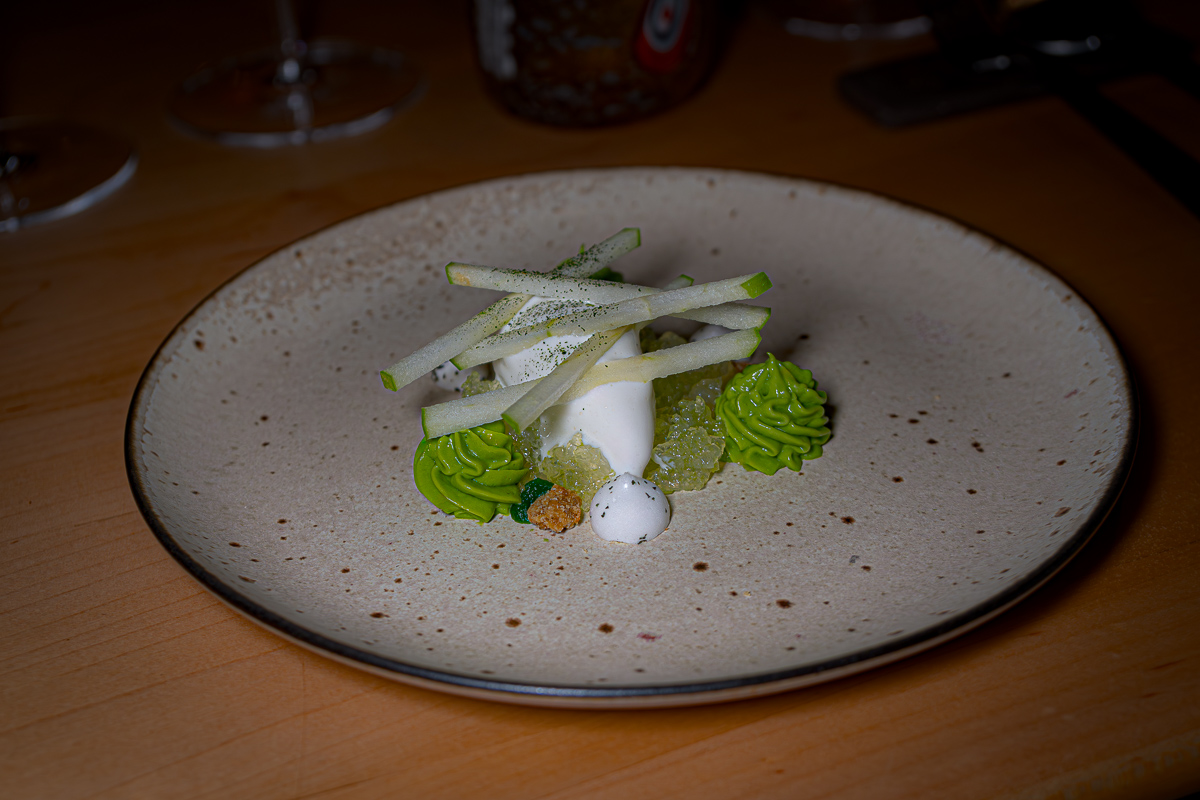
And then chocolate with miso arrives. Good, well-made, with the right level of sweetness. But dispensable. In technique and flavor combination, it doesn’t rise above the rest of the menu. The previous dessert delivered more nuance and closed the narrative better. The chocolate appears as a nod to familiarity—a concession to common taste.
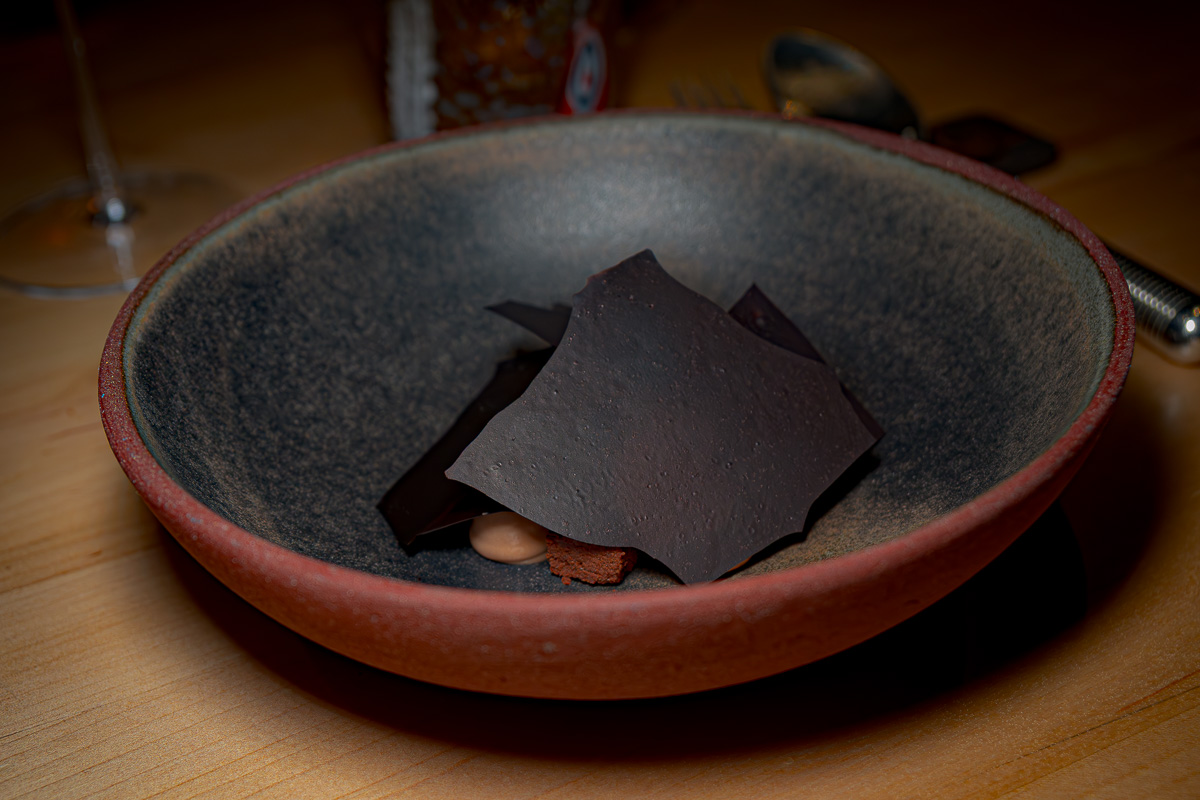
Technique and Service
During service, sommelier Hilal Yildiz opens up. We talk about wines, connections, and the difficulties of buying wine in Dubai. About the future and the profession’s challenges in the city. It’s an honest conversation: the market is complicated, logistics are expensive, and premium labels are hard to obtain. The pairing was technically executed very well. The service was impeccable. The sommelier presented knowledge, contextualized, and chose based on functional criteria. Everything worked.
But when we see a “premium” proposal and a corresponding price, one would expect some wines of superior quality. The functionality was there. The prestige and singularity of the wines, not always. It’s the difference between a pairing that works and a pairing that moves. Especially when we know the work developed in this field in Madrid.

A Final Note
Smoked Room Dubai is an experience of precision and restraint. Very good rhythm. Elevation of flavors. A happy marriage between Spain and Japan, between avant-garde and restraint, that holds us from beginning to end. Everything is beautiful. Everything seems designed to always work. And it works.
It’s the price of perfection: when you export fire, you risk making it predictable. But there’s merit here—maintaining an identity, even far from home. The team asserts itself in its own name, not just as a copy of Madrid. Fire, after all, travels well. What doesn’t always travel is improvisation, temperament, discovery, and imperfection. More control, less surprise. More machine, fewer errors.
It was, in truth, an excellent meal. It deserves the Michelin star it conquered in six months. The service and entire mise-en-scène are high-level. The Fire Omakase concept fits like a glove. Perhaps it lacks the virtuosity of its older Madrid sibling. But that’s not a flaw—it’s just a sign that it needs, gradually, to begin flying solo under the hand of Jesús Lobato Suárez.
And amid a Dubai saturated with imported concepts, copies, recyclings, and formulas where top restaurants suffer market pressure, Smoked Room definitively marks its presence among those who came to stay.
Because amid so much polished gold, someone still lights an honest and true fire.
Address — St. Regis Gardens, Palm Jumeirah, Dubai, UAE
Reservations — +971 4 595 3888
Hours — Tuesday to Saturday, 6:00 PM–2:00 AM
Prices — From €225 (excluding wines)
Not to Miss — The space, the cocktails, the hamachi, the tomato nitro, the Brioche, the Anolini and the Duck
Chef — Jesús Lobato Suárez (Young Chef Award, Michelin 2024)
Chef Patron — Dani García
Distinctions — 1 Michelin Star (since 2024) | #45 MENA’s 50 Best Restaurants 2025


